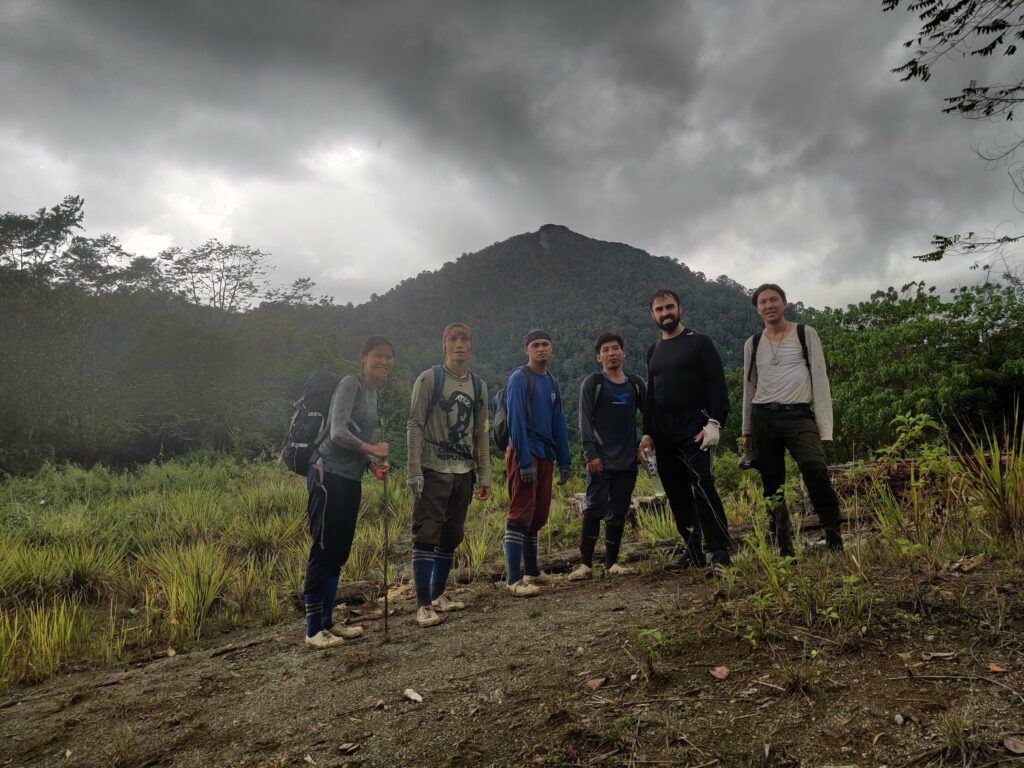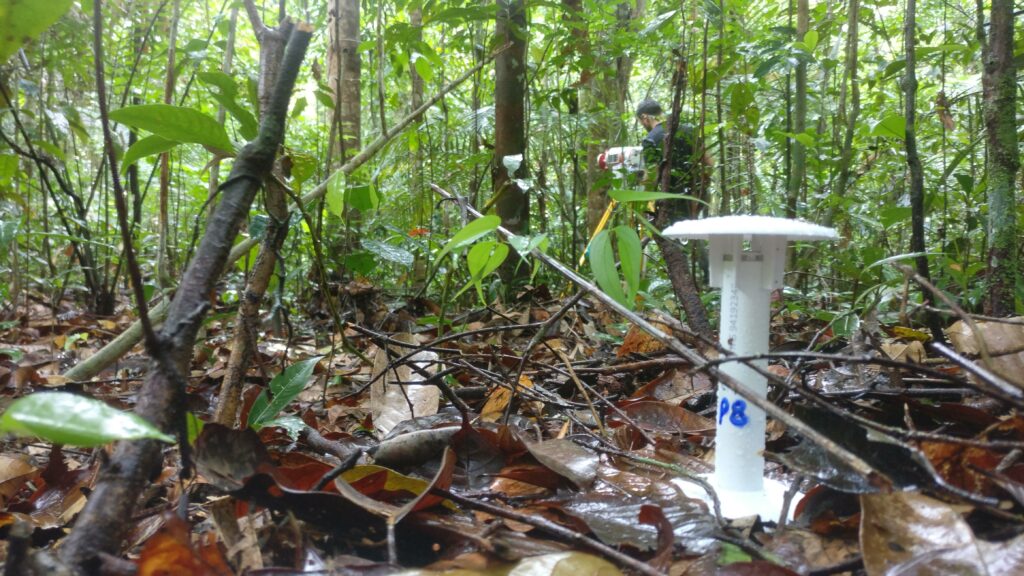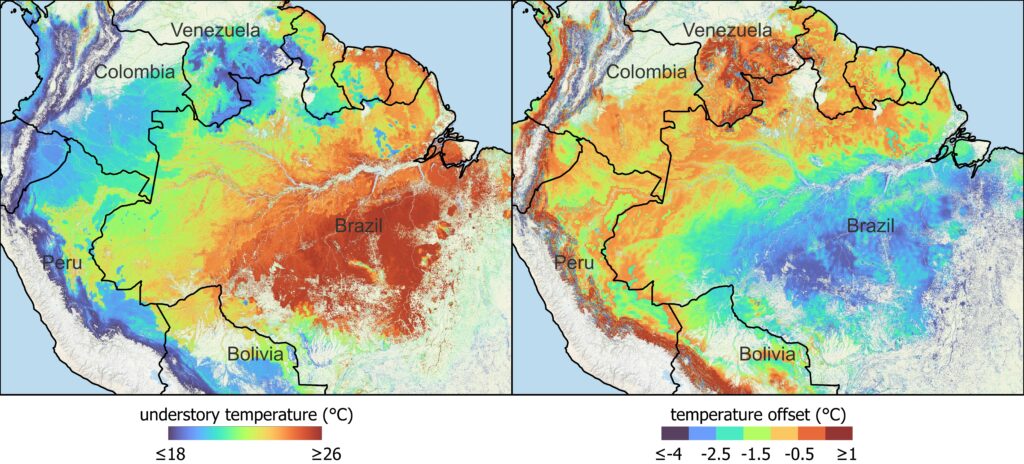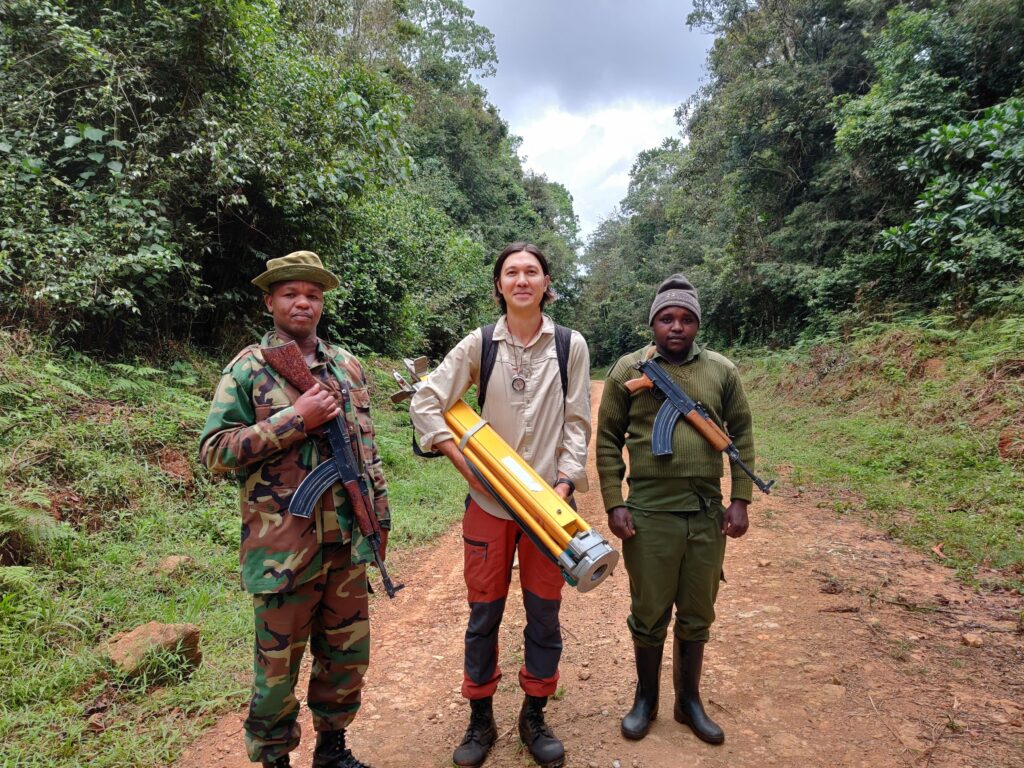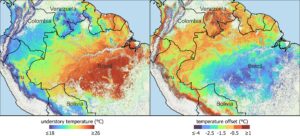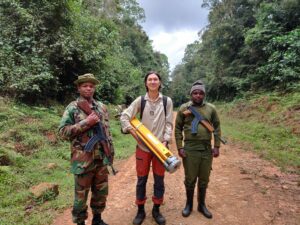CUHK
News Centre
CUHK unveils microclimates in tropical forests for the first time
Providing new insights for ecologists and policymakers dealing with climate change
A research team led by Professor Amos Tai Pui-kuen and Dr Ali Ismaeel from The Chinese University of Hong Kong (CUHK)’s Earth and Environmental Sciences Programme, and Professor Eduardo Maeda from The University of Helsinki, have conducted the world’s first study revealing the mysteries of microclimates within tropical forests, shedding light on the vital roles of temperature in shaping biodiversity patterns. This groundbreaking research, funded by the Research Council of Finland and supported by other international institutions, provides a more accurate understanding of the near-ground temperatures experienced by organisms within the understory of the forest.
Breaking through the obstacles in the tropical rainforests to study the understory’s microclimate for the first time
Tropical forests are habitats of half of the world’s species. They are also referred to as the lungs of planet Earth, which play a vital role in absorbing global carbon dioxide, thereby helping to mitigate the effects of climate change. Temperature is a key factor in determining the spatial patterns of biodiversity and the functioning of the forest ecosystems. Previous ecological studies have relied on satellite remote-sensing data, which estimates temperatures at two metres above the canopy top in open-air environments (the macroclimate). These data significantly deviate from the understory, near-ground temperature that organisms truly experience, and may inaccurately evaluate the impacts of climate change on the organisms. However, conducting the understory’s microclimate research is challenging due to the environmental difficulties.
Having support from international organisations, the research team overcame the environmental challenges and successfully deployed 180 of the sensors in various tropical forests across three different continents: South America, Africa, and Southeast Asia, capturing a wide range of environmental conditions within the tropical forests. They placed sensors at a height of 15 cm above the forest ground and measured the temperatures within its understory. To create a detailed dataset of understory temperatures across the tropics, the researchers used machine learning model to combine the on-site data with satellite, weather, and geographic information. This allowed them to produce a high-resolution map of understory temperatures, down to a 30-meter spatial scale across the entire tropical region. Compared with satellite-derived data for above-canopy temperature, the temperature difference can be as great as four degrees Celsius, which can have a major influence on different organisms. These findings provide key insights for studying and establishing species-oriented microclimate refuge maps in the context of changing climates.
The study revealed that, on average, understory near-ground temperatures in tropical forests are 1.6 degrees Celsius cooler than open-air temperatures. Additionally, the diurnal temperature range inside forests is, on average, 1.7 degrees Celsius smaller compared to open-air conditions. This is a crucial advance in ecological and global climate change research, as the discrepancies between the macroclimate and understory microclimate in the tropics may lead to biases and erroneous interpretations. Hence, microclimate-informed species distribution models have the potential to disclose more robust insights into the various processes underlying species to climate change. The research also uncovered substantial spatial variability in microclimate characteristics within tropical forests, influenced by factors such as large-scale climate conditions, vegetation structure and topography. These findings highlight the complexity and heterogeneity of tropical forest microclimates, and suggest that the impact of global warming may vary substantially among different areas even within the same forest.
The findings help explain how organisms adapt to their environment and provide new insights into conservation strategies
Professor Tai, Associate Professor of the Earth and Environmental Sciences Programme in the Faculty of Science at CUHK, emphasised the importance of considering microclimate conditions when studying tropical forest ecosystems. “By quantifying the spatiotemporal patterns of understory temperatures, researchers will be able to understand how organisms adapt and respond to their environment. This knowledge is essential to inform conservation strategies and mitigate the effects of climate change. Furthermore, the research provides valuable insights into how disturbances, such as deforestation or habitat fragmentation, affect microclimate conditions and biodiversity in tropical forests.”
Dr Ismaeel, Postdoctoral Fellow working with Professor Tai, added, “This study contributes to the growing body of knowledge on microclimate variability and its implications for biodiversity and ecosystem functioning. The study underscores the need for further research and highlight the importance of incorporating microclimate data into ecological models and conservation efforts.”
The dataset is available at https://etsin.fairdata.fi/dataset/67bdd112-479c-459c-81ce-6e9a2461d954.
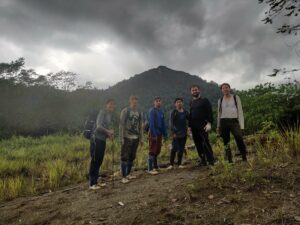
The ground-breaking research, funded by the Research Council of Finland and supported by other international institutes, provides a more accurate understanding of the understory near-ground temperatures experienced by organisms within the understory of the forest.


